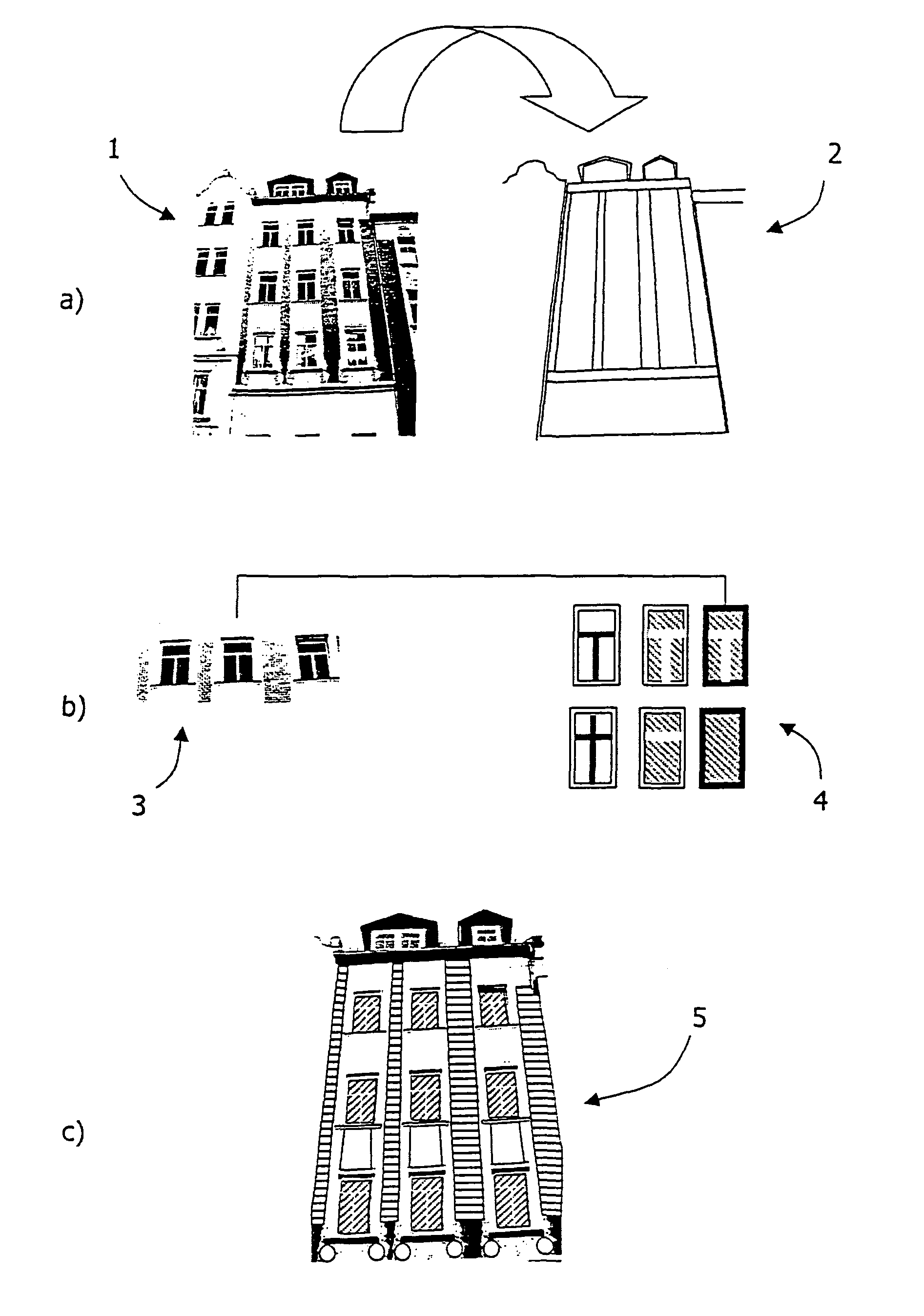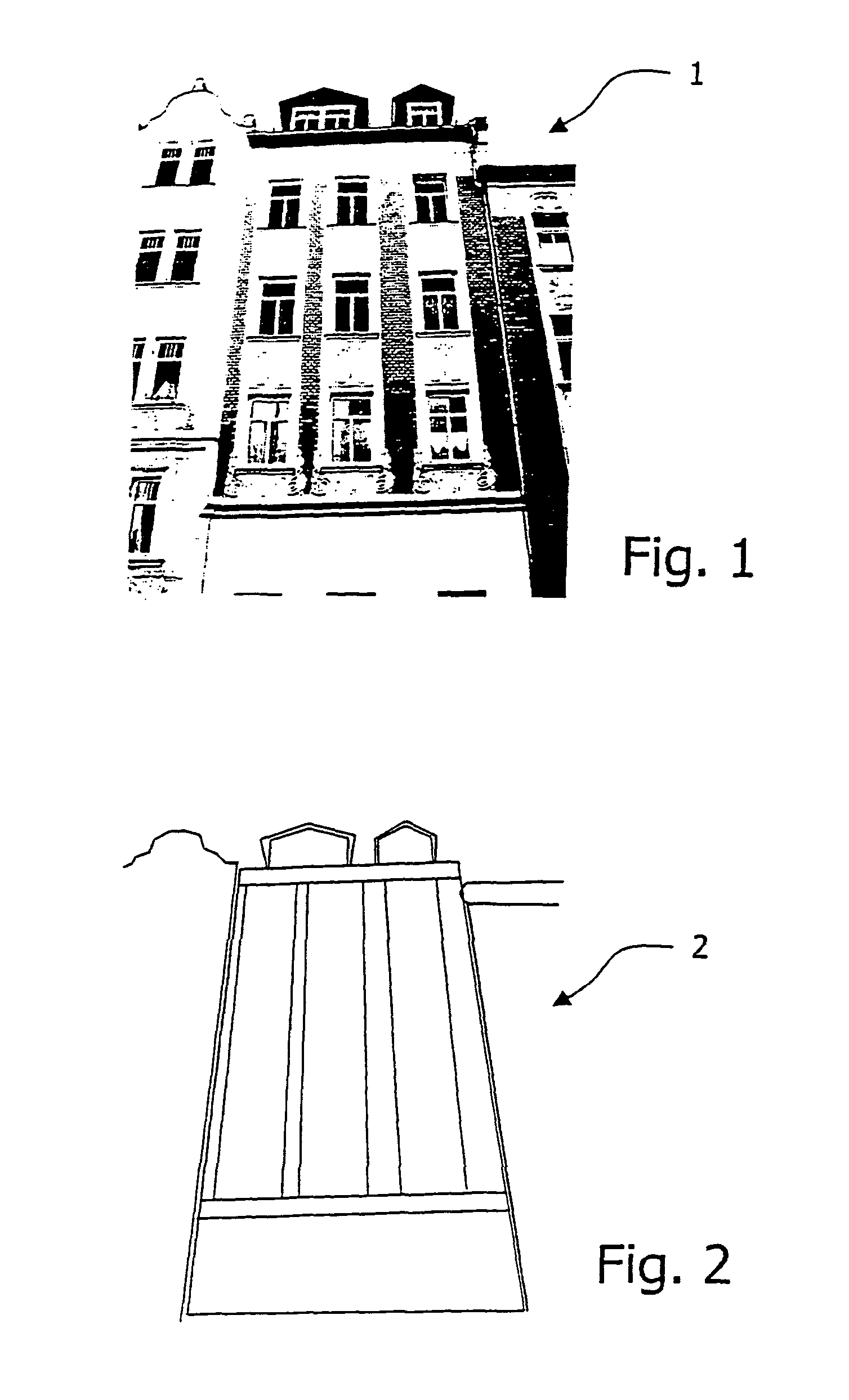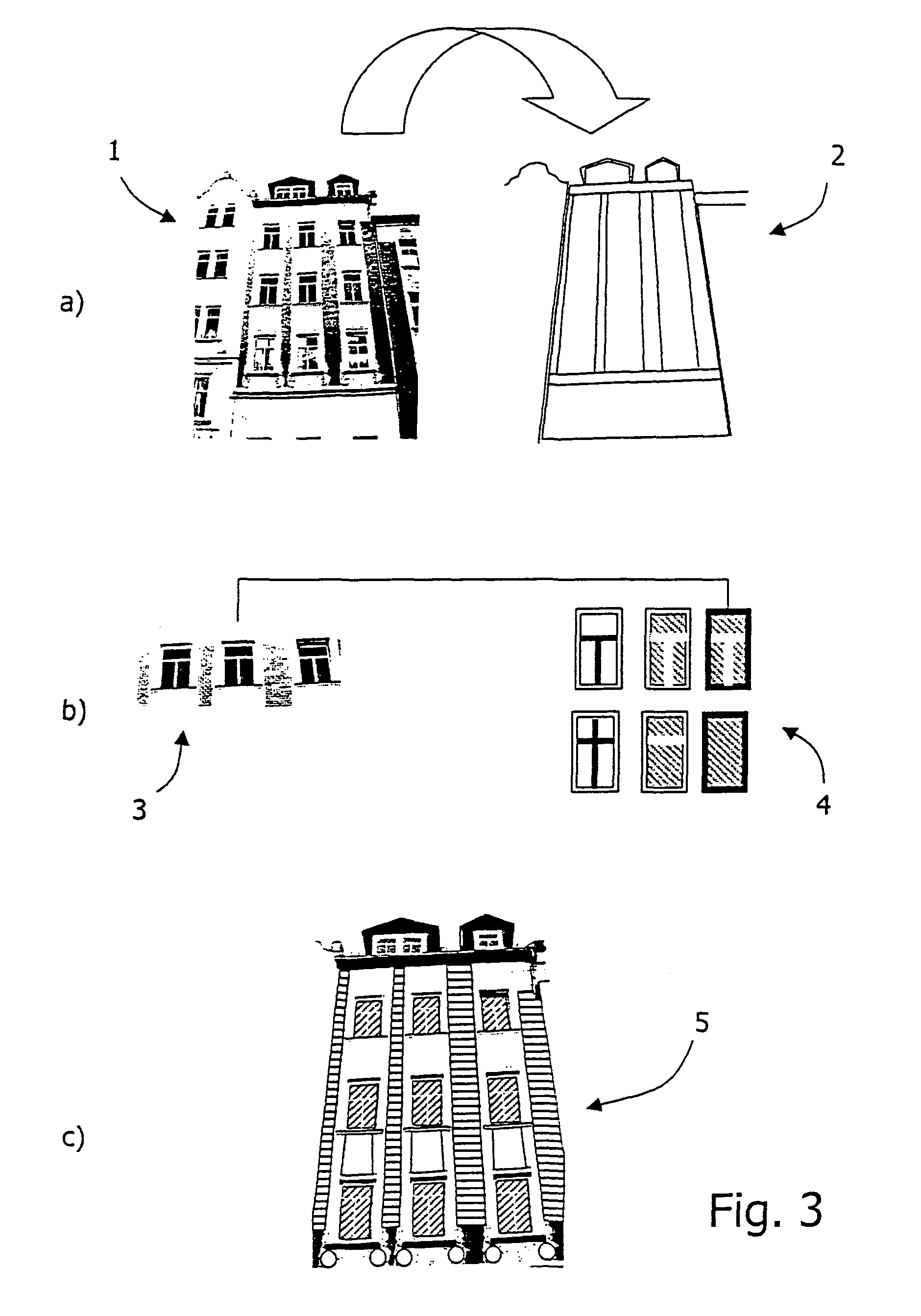Method for texturizing virtual three-dimensional objects
a three-dimensional object and virtual technology, applied in the field of texturing virtual three-dimensional objects, can solve the problems of difficult correction subsequently, low storage capacity, and high image quality of photographic source materials, and achieve the effects of reducing time expenditure, extensive automation, and improving competitiveness
- Summary
- Abstract
- Description
- Claims
- Application Information
AI Technical Summary
Benefits of technology
Problems solved by technology
Method used
Image
Examples
Embodiment Construction
[0055]FIG. 1 shows a façade picture 1, and FIG. 2 shows the pertinent surface of the correspondingly generated virtual three-dimensional object 2 in a perspective corresponding to the picture of FIG. 1. The façade picture shown in FIG. 1 has been generated in the form of a terrestrial digital photograph. Expediently, the terrestrial image is georeferenced. This means that the location of the photographic device in the coordinate system of the earth and the orientation thereof with respect to the coordinate axes at the shooting location is uniquely known.
[0056]Instead of the terrestrial photograph, also oblique or nadir aerial photographs can be used. The virtual three-dimensional object shown in FIG. 2 is a contour abstracted from the real object, i.e. the façade or the pertinent house, the boundaries of which reproduce the body boundaries of the real object at a reduced scale with sufficient exactness. Specifically, the virtual contour must be exact enough to allow the insertion of...
PUM
 Login to View More
Login to View More Abstract
Description
Claims
Application Information
 Login to View More
Login to View More - R&D
- Intellectual Property
- Life Sciences
- Materials
- Tech Scout
- Unparalleled Data Quality
- Higher Quality Content
- 60% Fewer Hallucinations
Browse by: Latest US Patents, China's latest patents, Technical Efficacy Thesaurus, Application Domain, Technology Topic, Popular Technical Reports.
© 2025 PatSnap. All rights reserved.Legal|Privacy policy|Modern Slavery Act Transparency Statement|Sitemap|About US| Contact US: help@patsnap.com



